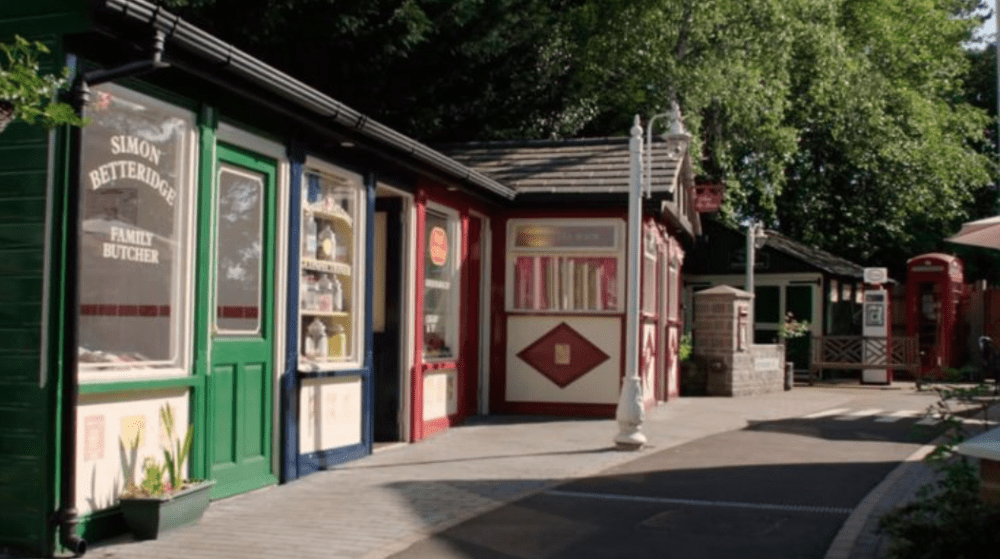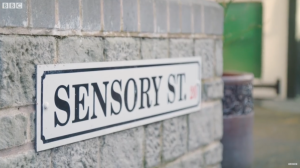
A nursing home has built a replica of a 1950s main street within its grounds to provide residents with an opportunity to rekindle memories and take part in activities and sensations that they experienced in their younger years.
The ‘main street’ is part of various sensory experiences that staff at Robert Harvey House, in Birmingham in the United Kingdom, have provided to residents to stimulate the senses and spark memories.

As well as the ‘main street’, music from the 1950s is played inside the home, and the residents can interact with animals, including a goat, parrots, guinea pigs, and ducks.
The main street, which is called ‘Sensory Street’, contains an old-fashioned lolly shop, a petrol pump, a post office, and a tea shop complete with Union Jack bunting across the front.
Residents can go inside the shops, and use the spaces as they would have in the past.
The BBC have made a short film about the facility, where more than half of the residents are living with dementia.
The idea for the main street came from a staff member’s trip to the Netherlands, where they saw a similar concept.
Anthea Reid, the manager of Robert Harvey House, said in the video that even when the weather’s bad, residents like to go out onto the street.

“Even if we haven’t got the glorious day like today, well wrap them up in a blanket, bring them out, take them out in the tea room, put the heating on, and try to make the day special,” she said.
Viv, whose mother Audrey has been a resident at the home for more than two years, said just being able to go to the butcher reminds her mother of happy times in the past.
“My mum was just saying about the butcher shop, she can’t remember the last time she saw a butcher. So just thinking about those things is really positive – how she felt when she was younger, the places she visited when she was younger.”
Caroline Cooban is the chief executive of the Broadening Choices for Older People charity, which runs the facility.

In the BBC video, she said, “If you have advanced dementia you may not necessarily recall what’s happening.
“But in that moment, if there’s a connection, a smile, a laugh, something that improves that day, that’s the most important thing.”
According to Dementia Australia, reminiscence therapy involves someone living with dementia reviewing past events in an experience that can be very positive and rewarding.
Maree McCabe, CEO of Dementia Australia told HelloCare, “The benefits of reminiscence therapy for people living with dementia, is that it brings back beautiful memories.
“It reminds them of the people that they were and that they still are.
“Reminiscence therapy allows them to reconnect with family, loved ones, pets and events that shaped who they are.”

Even though the person with dementia may not be able to respond verbally to what is happening around them, reflecting on their passt can still give them pleasure.
Remembering can also provide a distraction if someone living with dementia becomes anxious, agitated or upset.
Remembering the past events can provide a sense of peace and happiness, but it can also stir up painful or sad memories. When using reminiscence, it’s important to be alert to the person’s reactions.